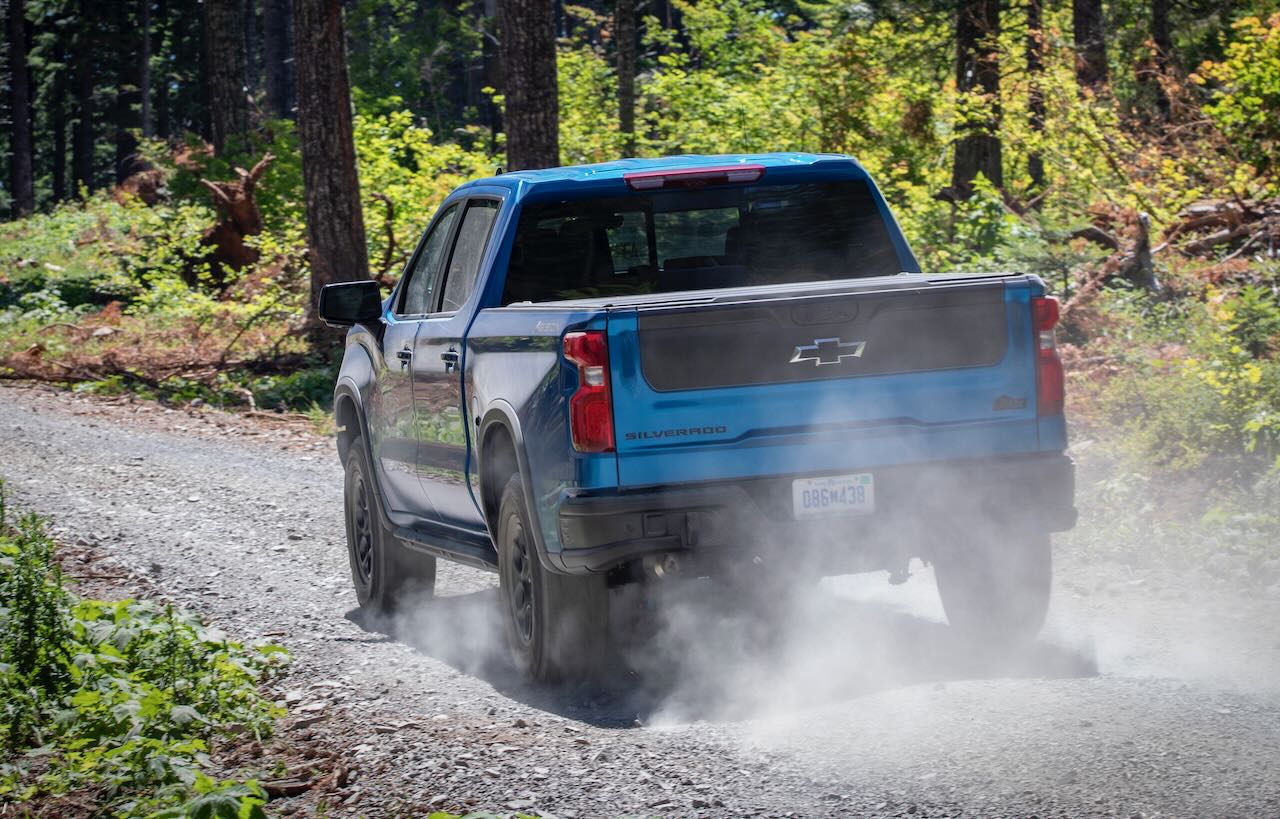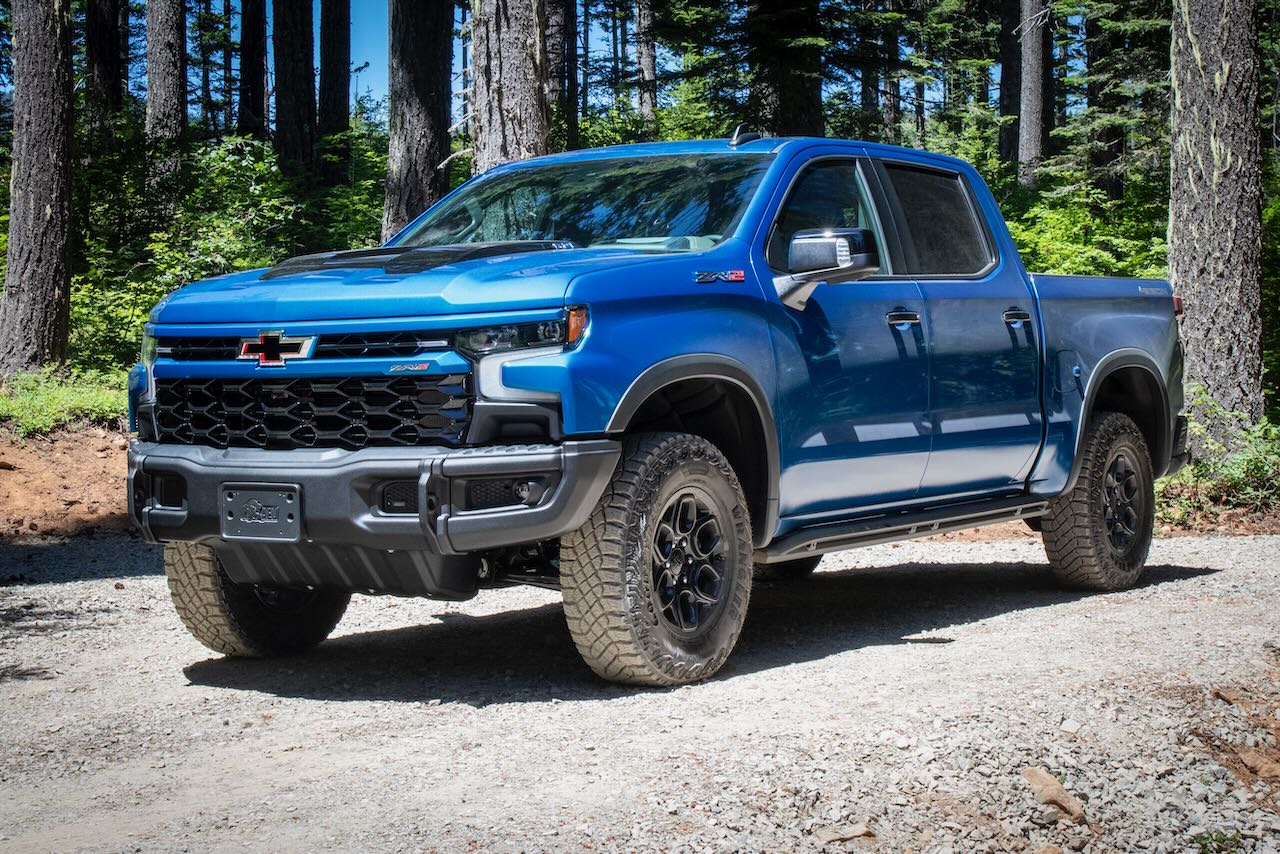In 2022, we asked, Is the new Silverado ZR2 the best overland half-ton? Scott Brady’s article covered the ins and outs of this trail-centric half-ton truck, and he praised the pickup’s capability and power along with a host of other overlanding and off-road amenities. GM recently added upgrades from the well-known off-road company American Expedition Vehicles (or AEV), as well as some of its own upgrades, and now offers a rugged Bison package on the Chevrolet Silverado 1500 ZR2 in hopes of making the truck even more trail-ready.
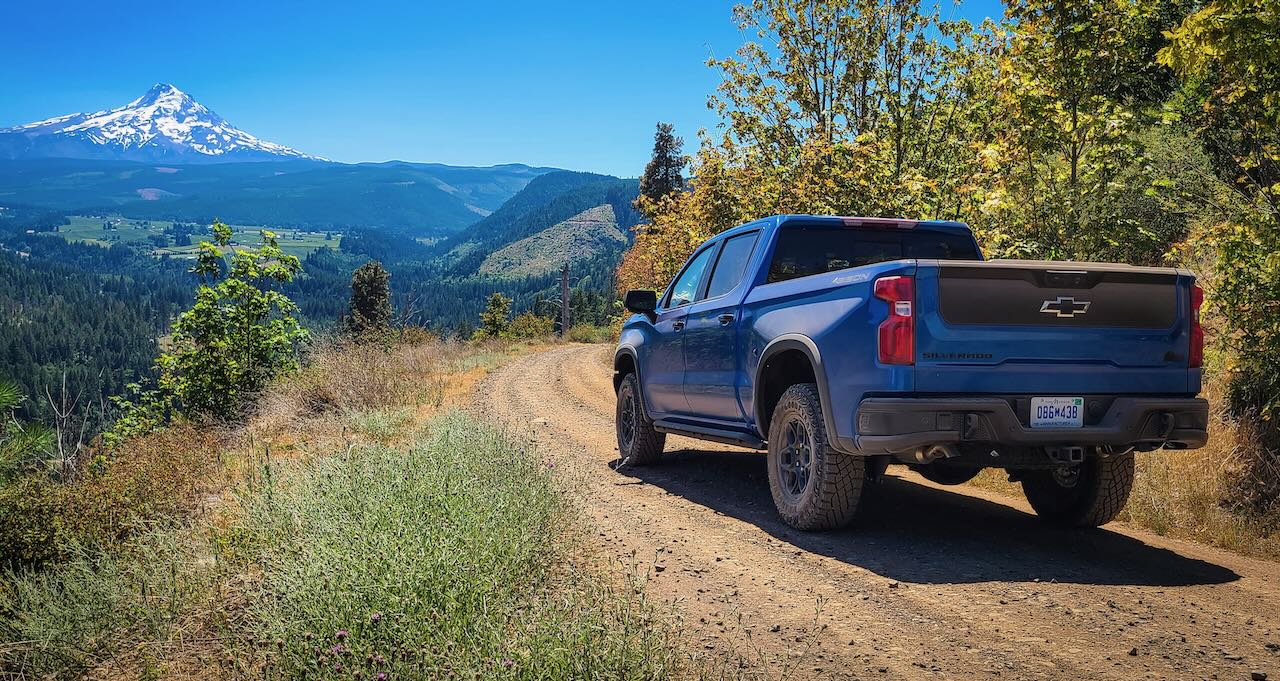
Bison Bits
The ZR2 model already includes off-road-centric features like a 6.2-liter EcoTec3 V8 making 420 horsepower and 460 pound-feet of torque, front and rear locking differentials, 33-inch Goodyear tires, a 2-inch lift with Multimatic 40-millimeter DSSV spool-valve dampers, and a Terrain Mode for one-pedal rock crawling abilities.
The Bison package includes that but adds AEV front and rear bumpers with integrated recovery points and unique underbody skid plates for the front, the rear differential, the transfer case, and the fuel tank. The Bison package also showcases GM’s steel rocker protectors, which Chevrolet describes as helping to “withstand off-road rock-sliding forces,” and exclusive black AEV 18-inch wheels with 33-inch (275/70R18) Goodyear Wrangler Territory M/T tires, along with a full-size spare on a matching AEV wheel. Selecting the Bison also means you get the Multi-Flex tailgate, allowing for a host of configurations and a trick fold-out step for easier access to the bed.

In addition to several exterior parts, the interior gets Bison-specific all-weather AEV floor mats and AEV logos embroidered on the front headrests. A few AEV insignias adorn the exterior as well.
Note: At this time, AEV does not list its Silverado parts on its website, so they must be purchased via this package.
The Bison package tacks on an additional $7,895. At this time, the ZR2 Bison is only available with the 6.2-liter V8; the 3.0-liter turbo-diesel can’t be had with the AEV goods.
On Road
Since most overland journeys begin with tarmac, that’s where I started. Initially, the Silverado feels big around town. Part of this is because the dual black bulges on the hood narrow visibility. Also, the bed is tall. ZR2 models are lifted 2 inches over a standard Silverado as well. I’m 5’ 7”, and the bed is nearly as tall as I am. Thankfully, the truck’s eight cameras help navigate small streets or the occasional tight parking lot with confidence.
The 6.2-liter V8 provides the truck with plenty of motivation. As expected, merging and passing duties are effortless, and the pickup gets up to cruising speed briskly. This isn’t a Raptor or TRX fighter, but the performance is admirable. The EcoTech3 mill is mated to a 10-speed automatic transmission; steering-wheel-mounted paddle shifters let you select your gears if so inclined. The rack-and-pinion steering felt tight, quick, and more responsive than expected from a half-ton truck.
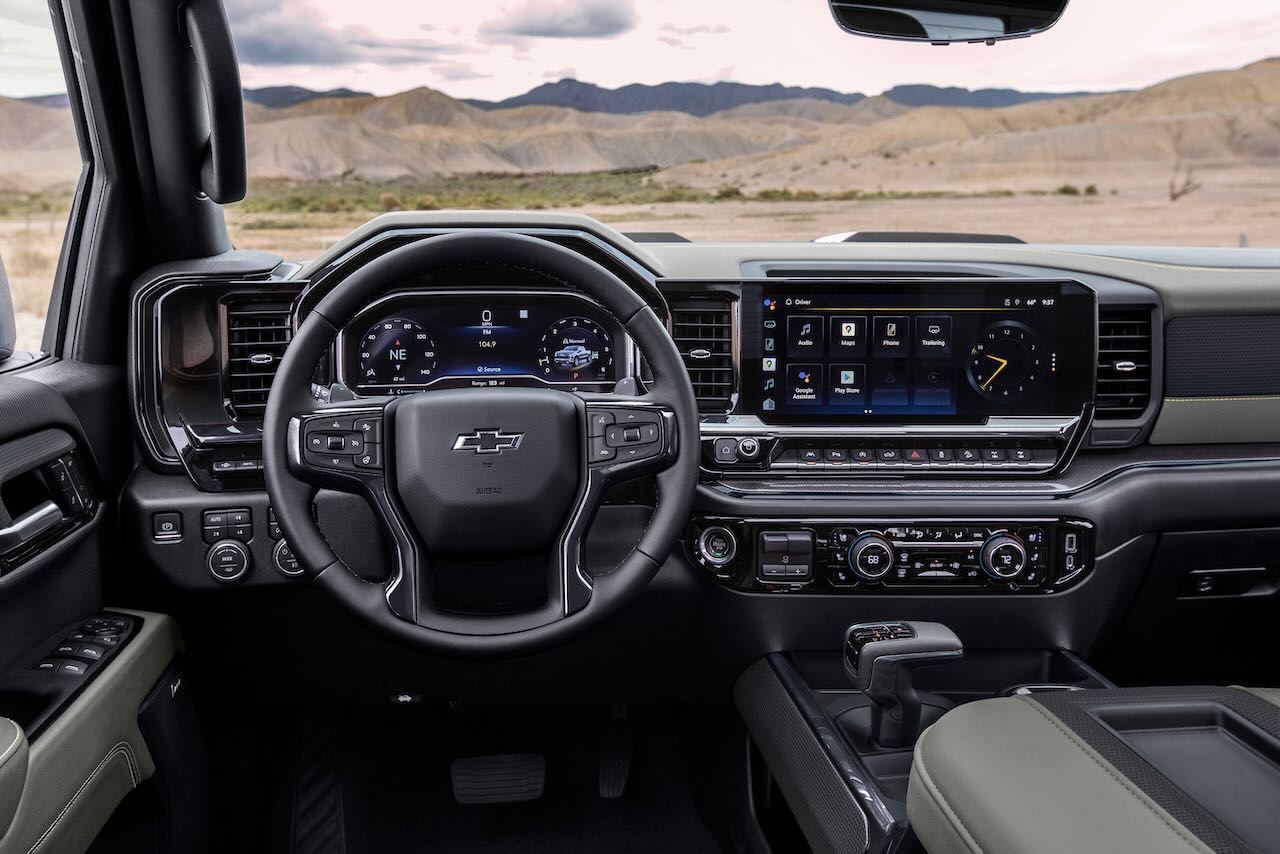
Bison models include the aforementioned Goodyear mud-terrain tires. Fortunately, Chevrolet must have a fair bit of sound deadening as you don’t hear the hum often associated with mud terrains. However, if you turn the air-conditioned seats on, they make a fair bit of hissing at full blast, almost like you left the stereo on a channel with static, which can be a bit tiresome. Otherwise, the hefty 8-cylinder mill cruises easily, comfortably, and quietly at speeds of 70+ mph.
Off-Road
According to Chevrolet, when compared to the standard Silverado ZR2, the Bison has improved stats for overlanding adventure. The front approach angle increases to an estimated 32.5 degrees (compared to 31.8 degrees). The departure angle improves to an estimated 23.4 degrees (compared to 23.3 degrees). Both trucks have 11.2 inches of ground clearance.
Adding more aggressive Goodyear mud-terrain tires means muddy routes are less likely to impede travel. The rocker panel protection protects the vast majority of the intended area, but I wonder why they don’t extend back farther for added protection in front of the rear fenders.
On the trail, the Silverado Bison felt stable and confident. The front and rear electronic lockers work as advertised. Locker engagement isn’t noted on the instrument cluster, unlike the 4WD system; instead, it’s via an orange light under the center stack switch.
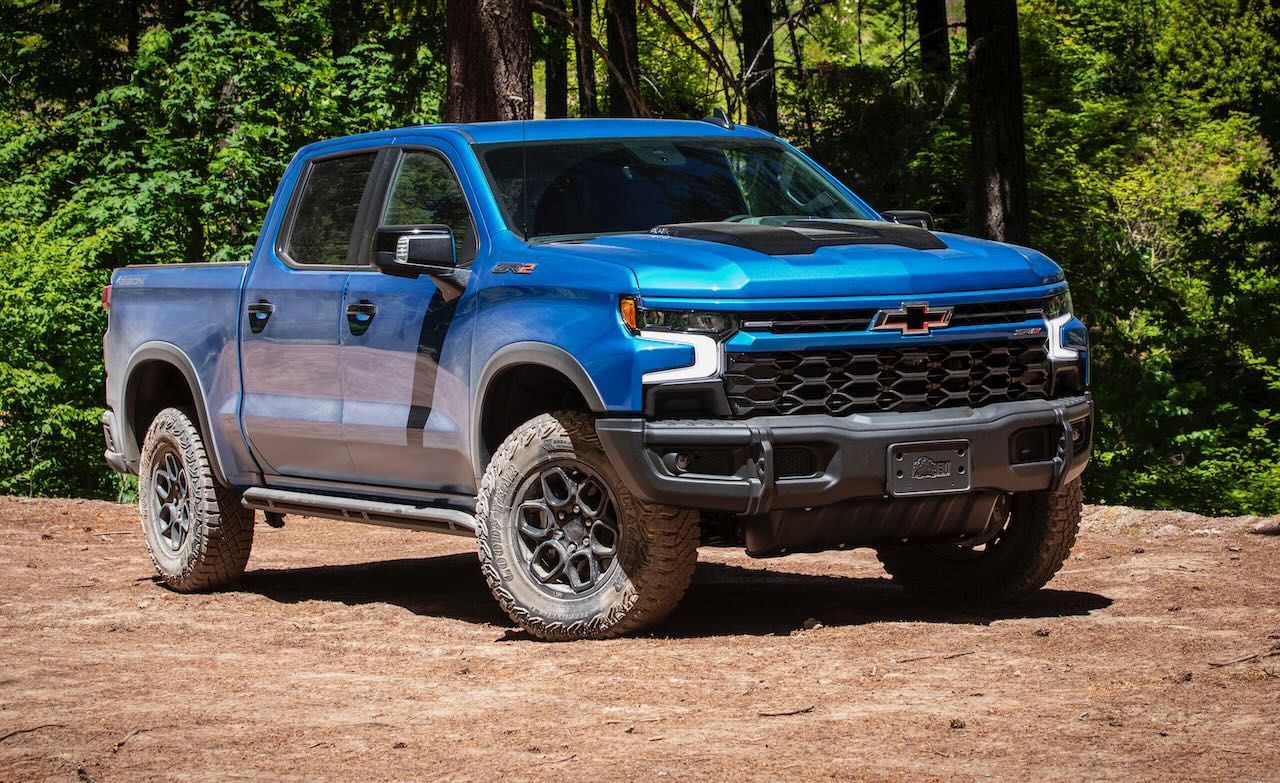
Speaking of the 4WD system, it’s easy to use, intuitive, and located above the left driver’s knee. There are 2WD, 4H, 4L, and an automatic setting. In Scott Brady’s ZR2 review, he said his knee would hit the 4WD switch, which could cause wear or damage over time. I didn’t have any interference with my knee, but I’m shorter than he is.
The 33-inch Goodyear mud-terrain tires never had any issues in the traction department and provided surefootedness everywhere I went. The Multimatic shocks did a good job at soaking up trail hazards, although they felt a bit stiff overall. Hill descent control worked as expected.
With a multitude of cameras, there isn’t an angle that wasn’t covered when driving off-road. With two front-facing and two rear-facing cameras, two cameras above the rear window, and one on each mirror, if you mistakenly hit an obstacle off-road, it’s going to be on you.
Both large and sleek simultaneously, the AEV steel vehicle recovery points feature large-radius holes ideal for soft shackles on both front and rear bumpers. The integrated hitch could also be utilized if using a receiver-mounted recovery point.
There was nary a worry about underbody damage. The hot-stamped boron AEV skid plates are stout and are ready to protect the underbelly from trail hazards.
As An Overlander
The Silverado ZR2 1500 Bison has a lot going for it when it comes to an out-of-the-box overlander. It’s comfortable and has gobs of interior storage for everything from GPS units and maps to beverages and gear. The center console alone was big enough to swallow our Garmin Tread Overland GPS and a host of cords to boot. Let’s put it this way: if you can’t find enough space inside for your stuff, you need to pare down.

The front seats are wide, if not a bit flat, heated, and air-conditioned. Rear seat room is generous for passengers, and the seat bottoms fold up if you’re hauling gear instead of people.
A heads-up display—one of the better ones I’ve used—can help eliminate fatigue on long trips. It even has roll and pitch data.
One thing the cab was lacking was a 12V cigarette-style power port. There were USB A and USB C ports along with a 120V AC plug, but no 12V. This can be an issue if you’re using certain accessories that require such power. In fact, after leaving our house for a day of exploring, we had to turn back to get my wife’s AC cord to power her laptop since there wasn’t a 12V plug. Additionally, the USB C port wasn’t powerful enough to power her laptop directly.
It should be noted there’s a second 120V plug in the truck bed that could be great for powering a fridge or other accessories. Our test model also had the optional folding hard tonneau cover from REV. This allowed us to lock some gear in the bed away from prying eyes and potential theft. I also love the hidden storage areas in the rear seatbacks, which can be a nice way to hide gear out of sight.
The mud-terrain tires did worry me a bit in terms of noise levels for long tarmac travel sections, although they weren’t as invasive as I expected, with only a small bit of road noise. Full disclosure, the air-conditioning was on most of the time—along with the noisy air-conditioned seats—and that may have drowned out any hum.
As Scott mentioned in his Silverado 1500 ZR2 piece, the truck has a relatively small range, and I noticed this as well. With a 24-gallon tank and an EPA rating of 14 MPG on the low side, you’re looking at as little as 336 miles at bone-dry. The range vanishes quickly, so attention should be paid when venturing to remote places; auxiliary fuel—like a jerry can or two—would be recommended. With a true mix of highway, city, and off-road driving, I netted 14.1 mpg combined.
This truck has an 8,900-pound towing capacity, making it able to pull most overland-style trailers. There are also integrated towing controls in the cab. It also has a payload capacity of 1,440 pounds, and there are 12 tie-downs in the 69.9-inch bed.
Conclusions
The Silverado 1500 ZR2 was already a great choice for adventuring, and the Bison’s amenities increase its off-pavement prowess. The benefits of any upfit package like the Bison are that all these parts are included in the vehicle warranty, can be rolled into financing, and come installed right from the dealer. At the time of this writing, AEV does not list the Silverado parts on its website if you wanted to build the vehicle à la carte. Items, such as the rocker protection and tonneau cover, are available via Chevrolet.

Without a doubt, the Silverado 1500 ZR2 Bison is a worthy truck for both on- and off-pavement adventures. Its power, capability, and comfort lend themselves to long-distance journeys. The mediocre range may be the Bison’s Achilles heel, though. Prepare accordingly.
The 2023 Chevrolet Silverado 1500 Crew ZR2 lists for $71,500. The Bison package adds $7,895. With the Tech Package, hard tonneau cover, folding tailgate, Glacier Blue paint, and more, our tester stickered at $85,300. This means it’s more expensive than a larger Ram Power Wagon (with solid axles) and less expensive (and slower) than a Ford Raptor. But this combination might be the just-right in-between buyers are looking for.
Pros:
- Increased off-road performance over the standard ZR2
- Added armor and capability direct from the dealership
- Powerful, comfortable, looks great
Cons:
- Mediocre range
- No 12-volt outlets
- 3/4-ton price on 1/2-ton chassis
Our No Compromise Clause: We do not accept advertorial content or allow advertising to influence our coverage, and our contributors are guaranteed editorial independence. Overland International may earn a small commission from affiliate links included in this article. We appreciate your support.



